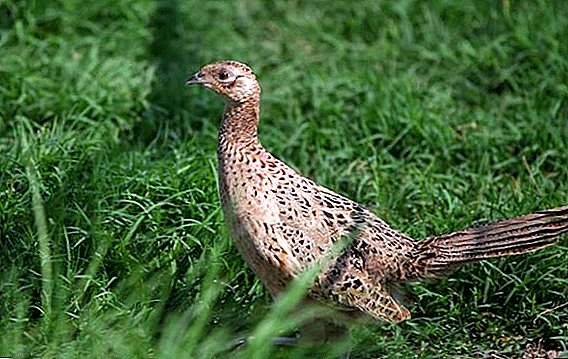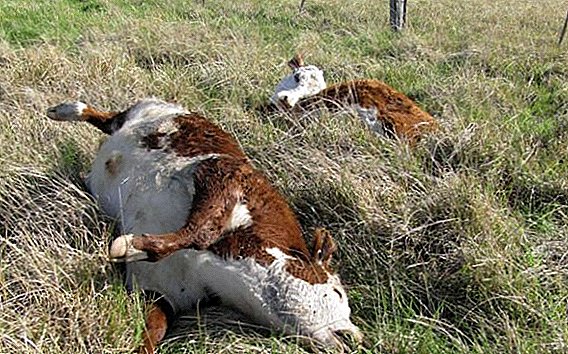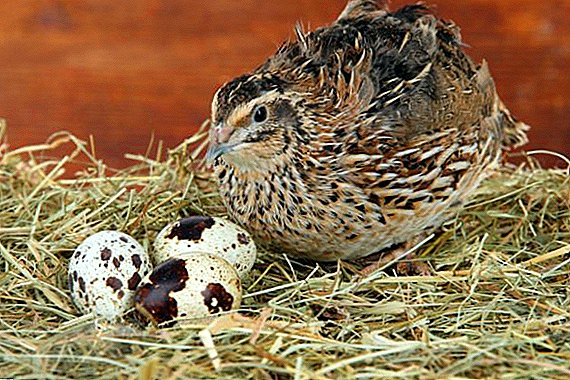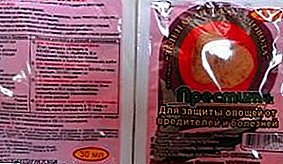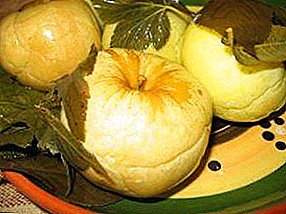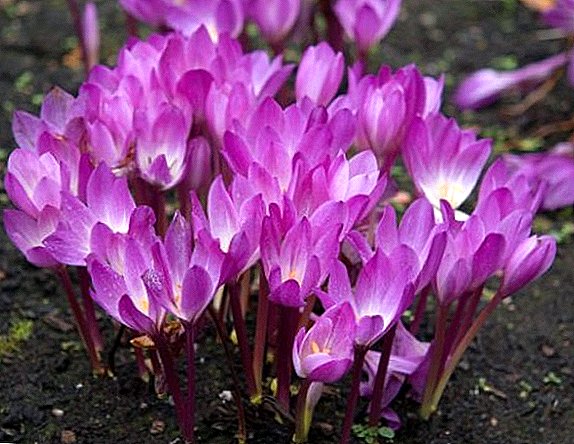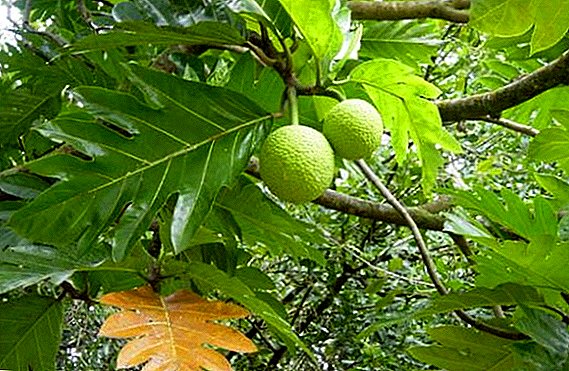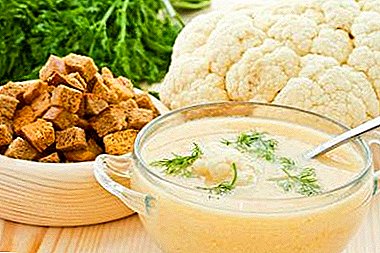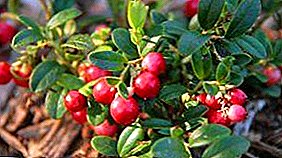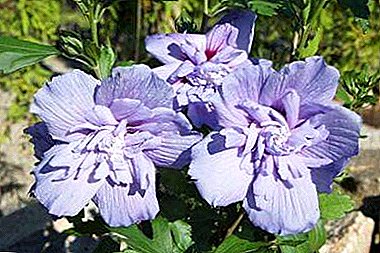
Houseplants whose homeland is tropical forests are rightly considered the most beautiful representatives of exotic flora among gardeners.
Despite certain difficulties in the maintenance of many thermophilic beauties, they are valued for their non-standard and very decorative appearance.
An interesting and unusually beautiful representative of the Malvova family is the hibiscus Syrian Blue Chiffon. In this article you will learn in detail about this flower.
Description
The popularity of Blue Chiffon (Hibiscus syriacus blue chiffon) among fans of decorative flowers is due to its unpretentious content and beautiful colors. This winter-hardy species can be grown in the open field and it is considered to be the most beautiful among the many types of garden hibiscus.
Plant appearance
it tender plant is a shrub height of 2 m or a small tree, reaching a height of 5 m, and strewn with flowering terry, intense blue flowers with torn edges and a bright purple center. Glossy leaves have an oval shape, and the size of a bud is from 10 to 15 cm.
The origin of the rose
 Syrian hibiscus arrived from Asia, China, India. For the first time in Europe, this flower appeared in the 18th century and was grown in greenhouses. The Blue Chiffon variety got its name due to the delicate, like silk, blue or blue petals, which make up a full double bud.
Syrian hibiscus arrived from Asia, China, India. For the first time in Europe, this flower appeared in the 18th century and was grown in greenhouses. The Blue Chiffon variety got its name due to the delicate, like silk, blue or blue petals, which make up a full double bud.
Blue chiffon - one of the new varietieswhich possesses extraordinary beauty with flowers and resistance to drought and frost. Thanks to the easy breeding and simple care, the flower successfully adapts to the climatic conditions of Russia, Ukraine, Moldova and the Caucasus.
Open field maintenance
Chiffon roses are ideal for the design of gardens and parks. Plant care does not cause difficulties even to inexperienced gardeners, and the result exceeds all expectations while observing simple rules.
Landing place
By choosing the place of planting this variety of hibiscus should be approached with all responsibility. The length of his life and the beauty of flowers depend on where the shrub is planted:
- Place for planting seedlings should be protected from wind and drafts.
- It is necessary to provide the plant with good lighting.
- It is important to analyze the neighborhood with other flowers and trees. Syrian rose chiffon does not like the close presence of other inhabitants of the garden, the only exception is roses of various varieties.
- Before planting at the bottom of the pit, it is imperative to pour a thick drainage layer in order to eliminate accumulations of large amounts of moisture around the roots.
- If the place is chosen correctly, the garden hibiscus will serve as an ornament of a personal plot up to 15 years.
Priming
Flower prefers light, moisture-permeable soil. Before planting, the top layer of garden soil should be mixed with peat and sand, and for better rooting of the seedling, a layer of compost should be placed over the drainage.
Watering
Water the plant should be regularly, not allowing the soil to dry. In the dry season, the land around the hibiscus should be loosened so that the moisture does not evaporate. If summer is hot, water will have to be every day.
Temperature
Flower buds in hibiscus of this species are formed at a temperature of 15-17 ° C. Comfortable temperatures are 25-29 ° C. The main advantage of the Syrian mallow is resistance to heat and frost.
Reference. When growing hibiscus Syrian Blue Chiffon in greenhouses after the beginning of the formation of buds, the bush can not be moved or rotated.
Pruning
 Garden hibiscus is a branchy shrub and needs spring cutting. Pruning has a different purpose..
Garden hibiscus is a branchy shrub and needs spring cutting. Pruning has a different purpose..
- Formative pruning is done to give the flower the desired shape. For a uniform growth of young shoots and create a lush crown should be removed weak and damaged branches.
- To get hibiscus in the form of a tree covered with blue flowers, you need to be patient and annually trim the side shoots, leaving the main trunk. Krona is shortened in early spring by several buds.
- Hygienic pruning is needed to obtain abundant flowering and growth of ketma. Last year's shoots should be shortened by one third. This procedure increases the number of buds planted.
- The rejuvenating haircut helps the overgrown old bush to throw out a lot of young shoots. To do this, the plant should be thinned, removing the old and dead branches, and the rest shortened by 2-4 buds.
Pruning a bush stimulates the growth of new greenery, and increases the life span of the plant.
Transfer
Blue chiffon is transplanted as a garden hibiscus in early spring, right after pruning.
- The pit should be spacious so that the roots do not rest on the obstacle, but are freely located in loose soil.
- At the bottom you need to fill a thick drainage layer and compost.
- The bush should be placed in such a way that the root neck is slightly covered with earth, after that the roots intended for roses are covered with roots.
The whole season the flower should be watered abundantly and next year it will delight the owners with flowering.
Wintering
Blue Chiffon has winter hardiness - resistant to frost and winters in our latitudes well. Only young individuals need shelter. Adult plants withstand short-term lowering of the temperature to –20 ° C. If the region has severe and long winters, then the flower should be covered at any age. Some growers grow mallow in large tubs and clean the bushes in cool rooms for the winter.
Breeding
 The easiest way to reproduce the Syrian rose Blue Chiffon is rooting cuttings. They are cut in the late spring or summer and immediately planted in pots filled with a mixture of sand and peat. With abundant watering after a month, the cuttings take root.
The easiest way to reproduce the Syrian rose Blue Chiffon is rooting cuttings. They are cut in the late spring or summer and immediately planted in pots filled with a mixture of sand and peat. With abundant watering after a month, the cuttings take root.
Dilution by seeds is more troublesome, as it is necessary to maintain a temperature of 25 ° C to obtain seedlings. Seeds are planted in a container filled with a mixture of peat and sand, and covered with glass. Crops must be periodically aired and sprayed. After the appearance of 4-5 leaves, seedlings can be dived into pots. With this method of reproduction flowering occurs in the fifth year.
Diseases and pests
"Blue chiffon" resistant to disease and insect attack. With prolonged drought and sparse watering, a weakening tree may be attacked by the aphid, whitefly or spider mite. To cope with the problem, it is necessary to treat the plant twice with an insecticide with an interval of 7-10 days. To avoid falling off of buds and leaves, it is necessary to feed the rose with complex mineral fertilizers. In order to scare away aphids, many gardeners plant lavender next to chiffon hibiscus.
Top dressing
To bloom this variety of Syrian roses was long and abundant, the plant should be fed every 2-3 weeks. Representatives of the chiffon series prefer phosphate fertilizers. In order for the pet to survive the winter better, potash fertilizers should be introduced in the late fall.
The most common feed containing potassium is ash.
Similarity with other colors
Hibiscus Syrian Blue Chiffon has some external similarities with other garden flowers:
- Calistegia Terry - This is a herbaceous perennial climbing plant with beautiful velvet flowers.
- Chinese rose intended for indoor breeding.
- Climbing Rose Looks good next to the lush bush of ketma.
- Mallow 1-2 summer plant, poorly tolerated lowering the temperature.
- Stockrose - a species of mallow, reaches a height of 2 m.
The Syrian blue hiffus variety Chiffon is one of the most beautiful flowers among the amazing diversity of the Malvaceae. With proper care and care, he will give the owners a lot of unforgettable minutes with his aesthetic look.


